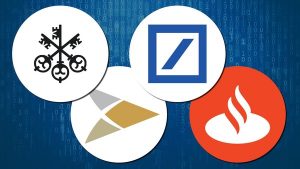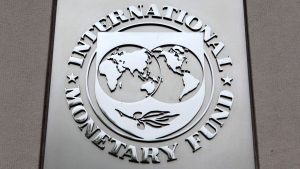
Four major world banks are set to announce the creation of a new blockchain-based digital currency, and are hoping to make it the global standard for settlements.
‘Digital Cash’ Needed
 The plan for the originally-titled “utility settlement coin” comes from UBS, Deutsche Bank, Santander, and BNY Mellon. Broker ICAP is also joining them with the aim of convincing central banks to use the new currency starting in 2018.
The plan for the originally-titled “utility settlement coin” comes from UBS, Deutsche Bank, Santander, and BNY Mellon. Broker ICAP is also joining them with the aim of convincing central banks to use the new currency starting in 2018.
All four are members of the 50-strong R3 consortium of financial institutions exploring ways to implement distributed ledger technology.
Hyder Jaffrey, head of fintech innovation at UBS, said:
You need a form of digital cash on the distributed ledger in order to get maximum benefit from these technologies. What that allows us to do is to take away the time these processes take, such as waiting for payment to arrive. That frees up capital trapped during the process.
First Currency with Major Backing
Although several banks have conducted research on various blockchain technologies designed to streamline interbank settlements, this is the first specific currency unit to have the support of such a powerful group.
Citigroup is reportedly working on its own “citicoin” digital currency, while Goldman Sachs has filed a patent for its “SETLcoin” and a group of hedge funds and traders is apparently also developing the similarly-named “Setl”.
Whether holy grail for banking or just a bandwagon, blockchain and/or distributed ledger technology promise to ease transactions between banks by removing the need to wait for settlement by a third party – much as Bitcoin does for the general public.
 Banks and central banks could use the digital unit for several purposes such as issuing bonds or building an equities trading platform, or settling transactions with national central banks – all using the same currency, which would have an equivalent value in each national fiat currency.
Banks and central banks could use the digital unit for several purposes such as issuing bonds or building an equities trading platform, or settling transactions with national central banks – all using the same currency, which would have an equivalent value in each national fiat currency.
UBS had announced it was developing a prototype of a currency called “utility settlement coin” in September last year, in collaboration with London startup Clearmatics Technologies.
Clearing, settlement and other processes cost banks between $65-$80 billion per year, according to this Wall Street Journal report. A study found that banks could potentially save up to $20 billion a year by using a blockchain-based settlement currency instead.
New Tech for an Old Problem
 If implemented on schedule, the big four’s currency unit would be the first blockchain currency used officially between major financial institutions – but the concept of a settlement currency for banks and central banks is not new.
If implemented on schedule, the big four’s currency unit would be the first blockchain currency used officially between major financial institutions – but the concept of a settlement currency for banks and central banks is not new.
The International Monetary Fund created its own unit of account in 1969 called “special drawing rights,” aka SDRs or XDR – a fiat currency that replaced gold and which has an elastic supply depending on need.
Until 2009 there was only XDR 21.4 billion in existence – but as part of the international community’s response to the Global Financial Crisis, the supply was increased to XDR 204 billion.
